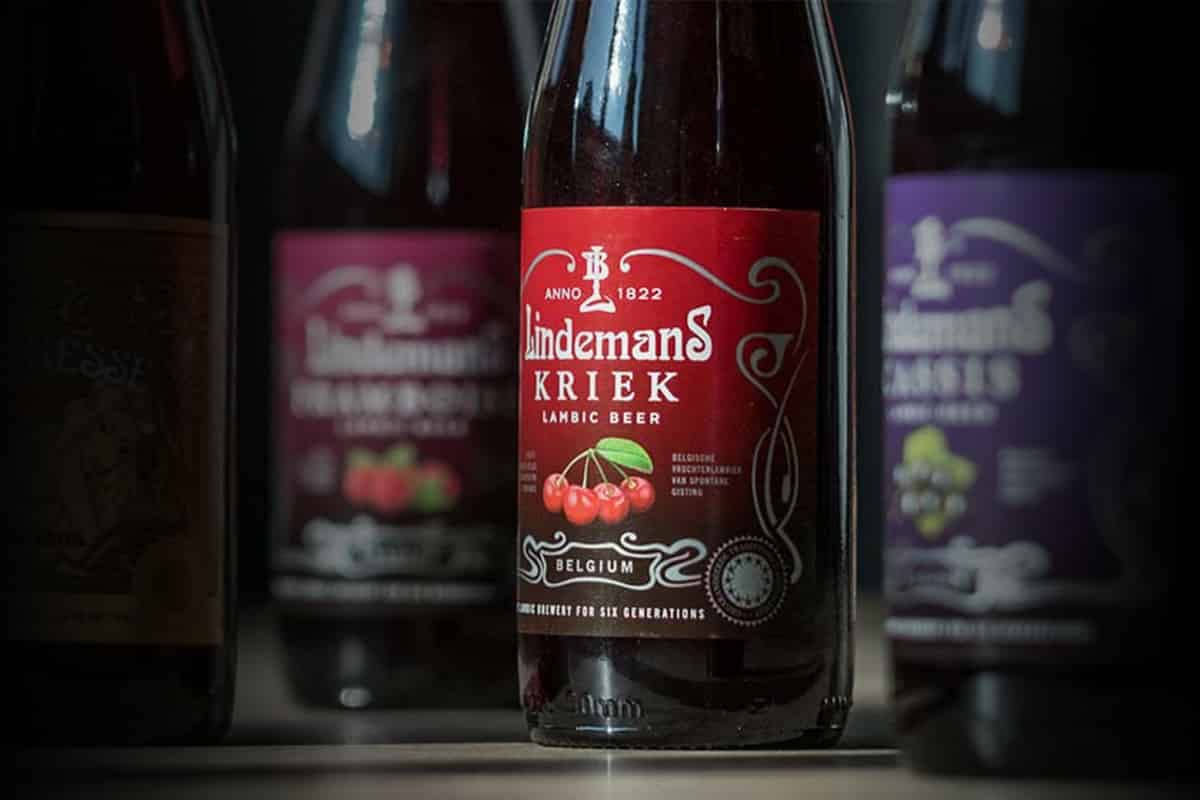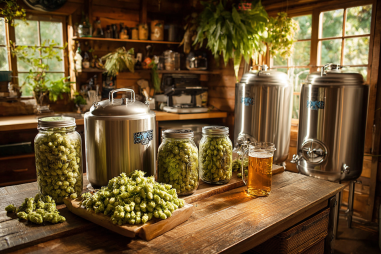There is something about fruits that is so inviting to non-beer drinkers. In fact, the whole Fruit Beer world is on the rise with the rekindling of this old Belgian favorite.
So, hop aboard this guided ferry over this river of beer called “cherry.”
Is Kriek a Beer?
Kriek is a beer, and more specifically, it is an ale. If your definition of beer is a hoppy drink, you might think twice with Kriek. It does not give you the bitter character from something like an IPA. It darts from end to end on the flavor spectrum: sour on one end, sweet on the other. It really depends on your preference. There is something for everybody with Kriek and its many interpretations.
How Do You Pronounce Kriek?
To make your life easy, it sounds like the word “creek,” as in the body of water. Put some emphasis on the “c,” by replacing it with a “k,” and you will get “kreek.”
What Does Kriek Mean in English?
The translation to English is fairly straightforward: Kriek means “cherry.”
You should avoid slapping it on your product if you are not a Belgian brewer since it is a legally protected name. It is pretty much like copyright.
Is Kriek a Cherry?
It is no surprise that “Kriek” is the Flemish word for their local cherry. The focus was on the juicy cherries they saw growing near their area. There was no attempt to be cryptic, they named it as they saw it.
Then again, there is still the issue of modern artificial cherry-flavored additives. Regardless of being imitations, at least they are cherries in spirit.
Is Kriek a Sour Beer?
If you want to get the facts, Kriek is a spontaneously-fermented ale much like the classic Sours. In addition, when it comes to the flavor profile, a cherry sharpness should convince you of the sour in Sour Beer.
If you combine a sour beer with naturally sour fruit, you could call that a sour Sour Beer.
Is Kriek a Lambic?
Lambic beers have so many branches that it so happens Kriek is one of them. Kriek is one of the original Fruit Beers derived from Lambic.
If you like simple answers, you could describe Kriek as a bunch of cherries soaked in the ferment of a Lambic. And then most brewers blend the resulting liquor with a younger Lambic to pump up the fizz factor.
Kriek does not need to be a Lambic. You could use other sour beers as a platform for your next recipe. There is much room for creativity. However, if you did do that, it would become a style of Kriek.
Kriek vs. Gueuze
If you remove the fruit facet, there is not much difference between Gueuze and Kriek. They are made from the same base: Lambic Sour Wheat Beer. And both beers share the same basic concept of blending Lambics up to a point.
When it comes to blending, Gueuze traditionally requires a three-year blend. Conversely, Kriek does not need to go beyond blending with a one-year-old Lambic.
Getting back on the fruit train of thought, the fruit is what makes Kriek stand out.
What Does Kriek Beer Taste Like?
Describing a great Kriek is like taking a bite out of a cherry pie. A sour cherry pie sprinkled with almonds. Certain versions are tentative in their sourness. Some versions remind you of a spoon of cherry jam.
For the most part, Kriek is cherry-rich but dry and crisp with some light acidity. A Kriek aged for longer would have some gentle bitterness from the yeast.
Is Kriek Sweet?
Classic Kriek should be dry in the sweetness department. This is thanks to the hardworking bugs that turn the sugars in your ferment into the alcohol you know and love.
Yet, modern interpretations tend towards the target market of the sweet-toothed folks. These sweet beers tempt the bitter beer haters with an option that is still a beer. You could say this is a win-win for beer lovers if you are not into fully authentic Kriek. However, watch out for sweetened juices, essences, and flavored syrups.
Which Fruit Is in a Kriek Beer?
The earliest known fruit used for Kriek is the Schaerbeek Cherry. It is a small and red cherry native to the town of Schaerbeek, in Brussels. It is known as wild cherry: it is not grafted on plum trees or “regular” cherry trees.
Because of the demand for Kriek, there are not enough Schaerbeek cherry trees to cater to it. That is why other cherries are taken into consideration.
What Other Cherries Can Be Used?
The dark-red Morello cherry is a common alternative. Do not even think about using sweet cherries. They will not give you the best flavor to weight ratio.
US craft brewers typically use any cherries that are fresh, local, and sour. You can use frozen sour cherries but you will need their pits. The worst-case scenario is you getting a Kriek with cherry-flavored high-fructose corn syrup.
What Is Good With Kriek?
Kriek pairs with most desserts and breakfast food like pies and Belgian waffles. Anything whose flavors pop if you added fruit. It is even good with chocolatey desserts. You can try it with your favorite fresh cheeses and green salads.
How Strong Is Kriek?
An Alcohol-By-Volume of 3.5 to 7.0 percent dominates the Kriek space. Since cherries do not contain much sugar, they do not add to the alcohol level, rather, they dilute your blend.
To reach higher ABV levels, brewers blend a younger Lambic after the aging with fruit. This allows for more alcohol production.
Can You Age Kriek?
After blending fruit and bottle conditioning, some brewers age Kriek for a few more years. This is a testament to the power of fermentation as a preservative.
How Long Can You Age a Kriek?
Some brewers age Kriek for five years after all the finishing processes. Do remember that the Lambic base is already aged a year. It all depends on the flavor profile they are trying to achieve. If you want it sourer, push your aging for longer. For fresher fruitiness, aging for a few months to a year is a good duration.
Do Krieks Age Well?
Like all Lambics, Krieks age well. Unfortunately, there are trade-offs. Aging for longer allows the yeasts to develop their associated flavors in the beer. If these flavors are not what you want to emphasize in your Kriek, brewers recommend one to two years of aging.
Some folks prefer not to age them. Again, it depends on your flavor preference.
How Do You Make Kriek Beer?
Kriek beer follows the same initial process of brewing Lambics. The processes branch off once you select the age of your base Lambic. Below is the outline:
- Select your base Lambic: one-year-old or two years old.
- Your ratio of cherries should be at least 20% by weight to the volume of Lambic. Specifically, at least 1.6 pounds per gallon (200 grams per liter).
- If you plan to get a fizzy Kriek, increase this ratio.
- De-stem your cherries and leave in the pits.
- If you use frozen cherries, you will need to extract pits from fresh cherries if you want the nutty notes in your beer.
- Steep your cherries in the Lambic of choice.
- Soak your fruit for one or two months. Taste it to see if you need to add more fruit.
- If you want carbonation, blend another one-year-old Lambic to restart the microbes.
- You should adjust the volume until you reach the desired fruit ratio.
- Bottle condition for 6 to 12 months.
Some brewers macerate for up to a year. They also go up to a 3.3 lbs./gal (400g/L) fruit ratio.
Where to Buy Kriek Beer
You can buy traditional Kriek from the US importers of brewers like Boon and Lindemans. One example is Merchant du Vin Corporation who imports Lindemans. Another is Global Beer Network for Boon.
If you support North American brewers and are not a classic Kriek fanatic, there are a lot of choices. You can try Allagash Brewing and Lost Abbey Brewing. You can find a brewer near you via the organization “Brewers Association.”







